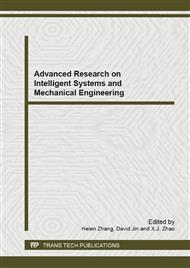p.260
p.265
p.271
p.275
p.279
p.284
p.288
p.294
p.298
Analysis and Study for Plate Heat Exchanger Based on FLUENT Soft
Abstract:
The new plate heat exchanger with modular design is easy to realize the large-scale. It also has the performance advantage of low pressure drop and anticorrosion. The oil refining, chemical industry, steel and iron, metallurgy, electric power industries will be the future main application of it. According to FLUENT soft, this paper constructs the simulation model of the flat type air heat exchanger reverse-flow unit and cross-flow unit. And it also simulates the actual working conditions for the two units based on the existing data. Then we can get the interrelation of temperature field, stress field and velocity field during the using progress. So it can provide some evidences for analyzing heat transfer and resistance properties of the flat type air heat exchanger
Info:
Periodical:
Pages:
279-283
Citation:
Online since:
January 2013
Authors:
Price:
Сopyright:
© 2013 Trans Tech Publications Ltd. All Rights Reserved
Share:
Citation:


